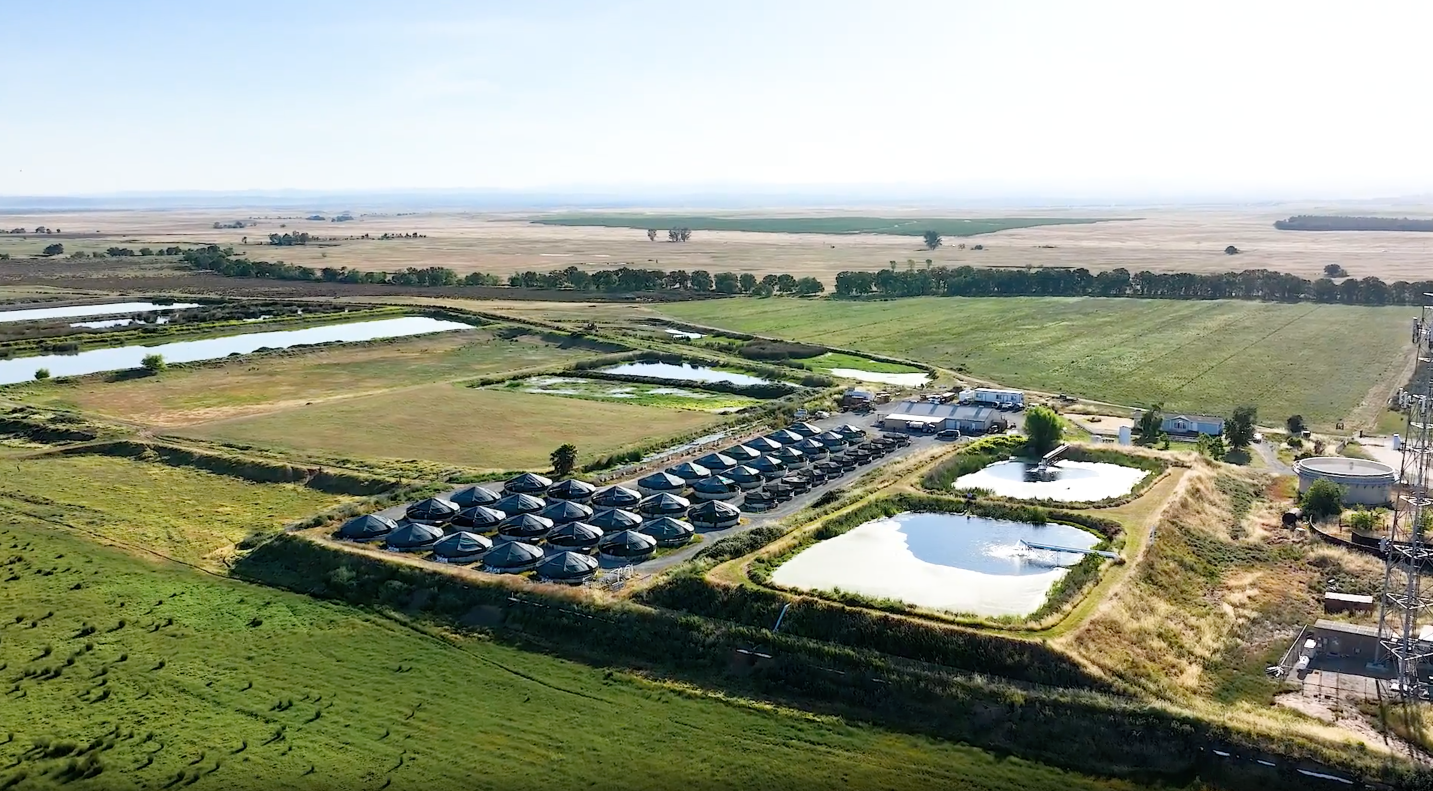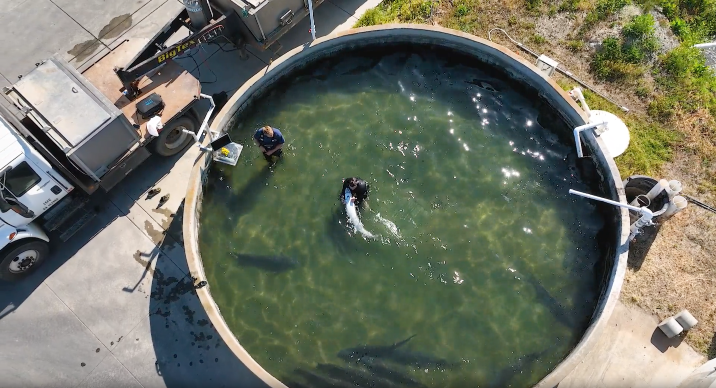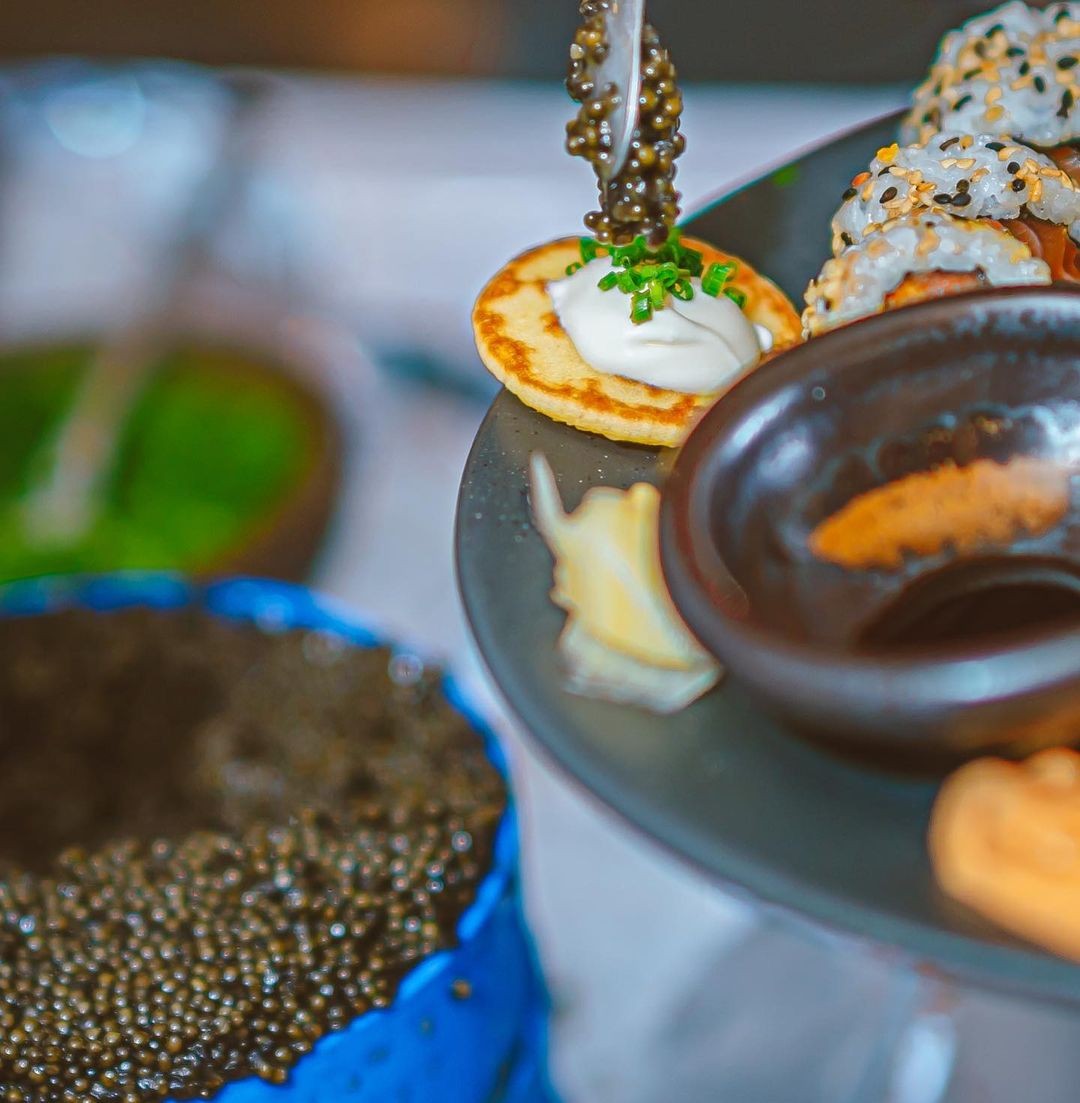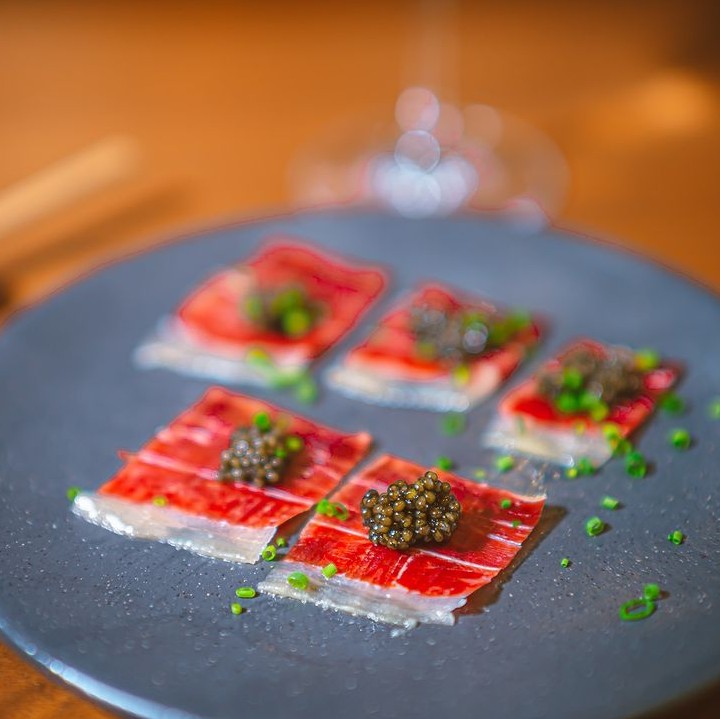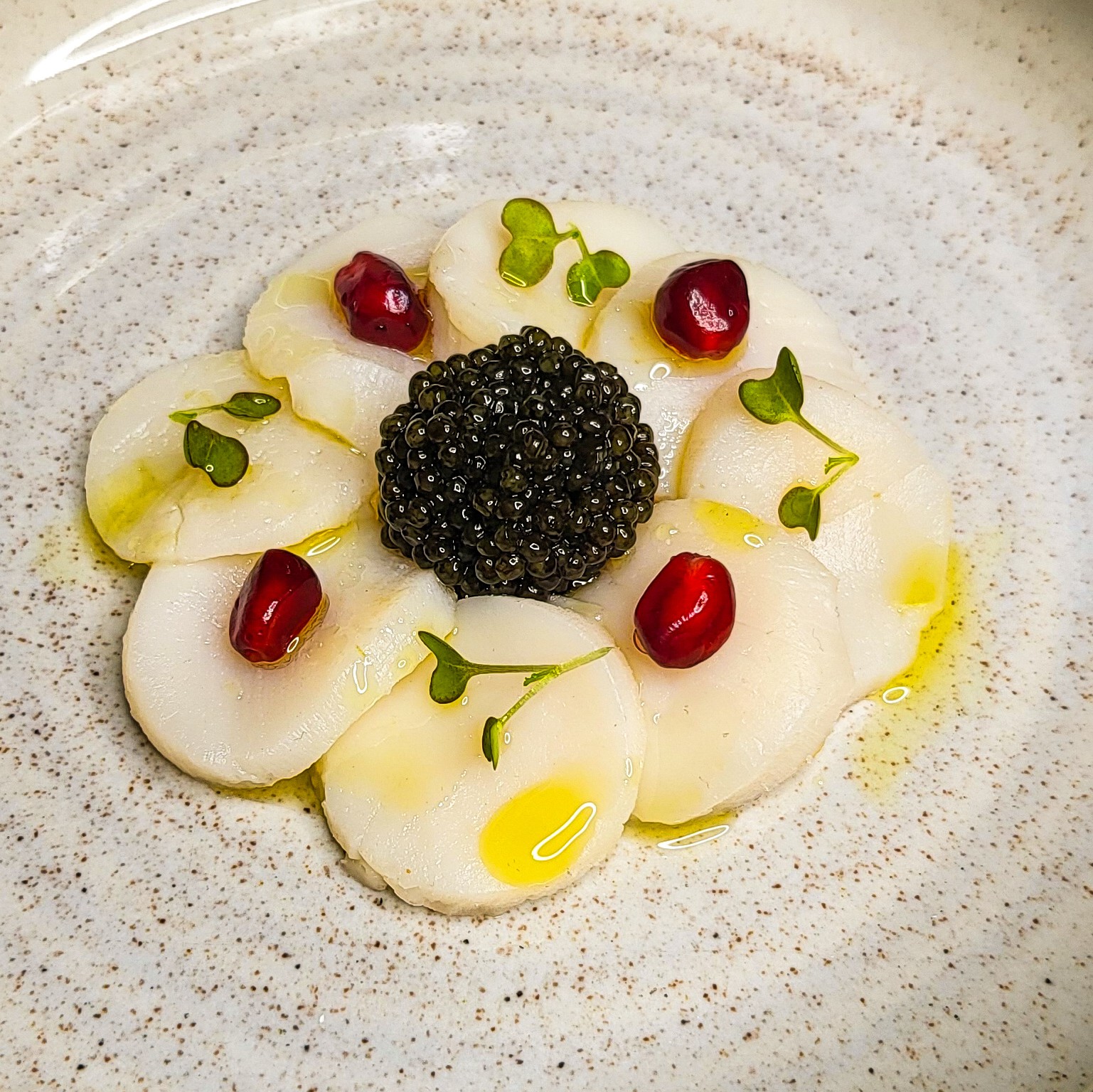How is Caviar Harvested? Unraveling the Sea's Exquisite Treasure
Introduction
Discover the epitome of culinary luxury with beluga caviar, a prized delicacy adored by epicureans worldwide. Delve into the fascinating world of caviar production as we unveil the secrets behind harvesting these exquisite fish eggs.
The process of harvesting caviar is an art that demands precision and expertise. The sturgeon fish, revered for its roe, plays a central role in producing caviar. Maturity is crucial for the sturgeon fish to ensure the desired texture and flavor of the eggs.
In the depths of pristine waters, the caviar harvesting process begins. Skilled hands gently extract the fish eggs, preserving their integrity to deliver a product worthy of connoisseurs. The harvested caviar undergoes meticulous sorting and grading, presenting an array of flavors and appearances that delight the senses.
A crucial step in caviar production involves the salt curing process. This carefully crafted method transforms raw fish roe into the delectable salted cured fish roe, renowned for its exquisite flavor profile.
Sustainability takes center stage in modern caviar harvesting. As sturgeon populations face concerns, the industry strives for ethical practices to safeguard the species for future generations to enjoy.
Join us on a journey into the world of caviar harvesting as we unravel the artistry and science behind this culinary treasure. Whether you are an avid caviar enthusiast or simply curious, explore the timeless tradition that graces tables with unparalleled opulence.
The Sturgeon - A Majestic Fish
Introducing the Sturgeon and Its Historical Significance
The sturgeon, an ancient and majestic fish, holds immense historical significance as the primary source of one of the world's most prized delicacies - caviar. Revered for centuries, caviar is a delicacy of unfertilized fish eggs that has delighted the palates of elites and gourmands alike. Let's embark on a journey to discover the captivating world of the sturgeon and its vital role in caviar production.
Habitat and Behavior of the Sturgeon
Found predominantly in freshwater bodies such as rivers, lakes, and even brackish waters, the sturgeon's natural habitat is as intriguing as its allure. This fascinating creature exhibits slow growth and migratory instincts, making it highly adaptive to diverse environments. Its elongated body, adorned with bony plates known as scutes, offers a glimpse into a prehistoric era.
Gracefully cruising through waters, sturgeons boast a remarkably long life span, taking years or even decades to reach maturity. Their prolonged existence exemplifies wisdom and resilience, fascinating marine enthusiasts and scientists alike.
The Importance of Sustainable Sturgeon Fishing
As the demand for caviar soared, wild sturgeon populations faced the peril of extinction due to overfishing. In response, caviar producers have adopted sustainable practices, such as caviar farming (aquaculture), to alleviate the pressure on wild sturgeons.
Caviar farming involves carefully breeding sturgeon in controlled environments, providing a viable alternative to harvesting caviar from wild sturgeons. This approach ensures a steady supply of sturgeon caviar without harming the fish, contributing to the conservation of wild sturgeon populations.
The Caspian Sea, known for its abundant caviar harvest, has become a focal point for sturgeon conservation efforts. Countries bordering the Caspian Sea have implemented regulations to manage and control caviar production, curbing illegal harvesting and promoting sustainability.
The sturgeon embodies both history and opulence, being the source of the coveted caviar that has enchanted the culinary world. From its natural habitat and remarkable behavior to the significance of caviar farming, the sturgeon's story intertwines with a commitment to a sustainable future. Embracing responsible practices, caviar producers ensure that the legacy of sturgeon caviar endures for generations to come.
Experience 40 Years of Caviar Excellence - Discover Our Sustainable Aquaculture and Sturgeon Preservation Journey! Indulge in handcrafted Sterling Caviar, meticulously graded for flavor, texture, and size.
Differentiating between Various Types of Caviar Based on Sturgeon Species
Among the diverse caviar varieties, beluga caviar, sourced from the beluga sturgeon, reigns supreme as the pinnacle of caviar excellence.
Its large, lustrous grains and buttery flavor command the highest regard among caviar connoisseurs. Another sought-after variety is sevruga caviar, harvested from the sevruga sturgeon, offering smaller, richly flavored eggs.
Beyond traditional caviar, salmon caviar has emerged as a popular alternative. Derived from salmon roe sacks, this vibrant orange caviar boasts a distinctive and mildly salty taste. While not technically caviar in the strictest sense, salmon caviar has earned its place as a delightful and more accessible option for seafood enthusiasts.
Factors Influencing Caviar Quality and Pricing
Several factors play a crucial role in determining the quality and pricing of caviar. The method used to harvest caviar significantly influences its overall quality. In traditional caviar harvesting, sturgeons are killed to extract the roe, impacting the caviar's sustainability and conservation efforts.
Caviar quality is also influenced by the condition of the fish during the harvesting process. For instance, broken eggs from stressed or mishandled sturgeon result in a lower-grade caviar.
The rarity of certain sturgeon species contributes to the exclusivity and higher price points of their caviar. Beluga sturgeon, being an endangered species, further elevates the value of beluga caviar, making it an unparalleled gourmet delicacy.
Additionally, the grading system classifies caviar based on color, size, and texture. The highest grades exhibit uniformity in egg size and a glossy appearance, indicating superior taste and aesthetic appeal.
How is Caviar Harvested : The Harvesting Process
Caviar harvesting marks a significant moment in the life of sturgeon fish. Timing is crucial, as the eggs must reach an optimal stage of maturity to produce caviar of the finest quality.
Generally, sturgeons are harvested for their caviar when they are between 10 and 25 years old, but the exact age varies depending on the sturgeon species.
The best time for caviar harvesting aligns with the sturgeon's spawning season. During this period, the fish produce an abundance of eggs, making it an opportune moment for caviar production.
Ensuring the sturgeon reaches this mature stage allows for the development of eggs with the desired texture and flavor, enhancing the overall caviar experience.
Challenges of Identifying Ripe Caviar-Bearing Sturgeon
Identifying ripe caviar-bearing sturgeon presents a challenge for caviar producers. Unlike other fish species, determining the readiness of sturgeon eggs is not as simple as observing their external appearance.
To ascertain the maturity of the eggs, caviar producers must employ various methods, including ultrasounds and hormone analysis.
As the classic caviar harvesting method involves killing the fish to extract the eggs, accurately assessing the ripeness of the caviar-bearing sturgeon becomes imperative. If the sturgeon is not ripe, the eggs may not have the desired flavors and can adversely impact the caviar's quality.
The Gentle Extraction Process to Preserve Caviar Integrity
To ensure the utmost integrity of the caviar, a gentle extraction process is employed. The traditional method, involving killing the fish, is giving way to more ethical and sustainable practices. Caviar producers now aim to preserve the sturgeon fish population by turning to farmed fish for caviar production.
With the advent of caviar farming, sturgeons can be carefully monitored and maintained in a controlled environment. When the time for caviar harvesting arrives, the fish are gently anesthetized to prevent stress and discomfort. This humane approach allows the caviar to be harvested without harming the sturgeon, ensuring the continuation of caviar production without endangering wild sturgeon populations.
In conclusion, the caviar harvesting process marks a pivotal moment in the life of sturgeon fish. The delicate balance between timing, maturity, and ethical practices influences the caviar's quality and sustainability. By embracing gentle extraction methods and caviar farming, caviar producers can continue to provide true caviar - an exceptional delicacy that lets connoisseurs worldwide savor the essence of luxury with every delectable bite.
Discover our farms and experience the exquisite journey of caviar from farm to plate. Savor sustainably sourced, expertly crafted caviar. Indulge in the finest flavors today!
From Roe to Caviar - The Art of Maturation
Once the precious sturgeon roe is harvested, the transformation from simple fish eggs to the exquisite delicacy known as caviar begins. Curing and salting are the fundamental steps that elevate the raw roe to the delectable treat loved by connoisseurs worldwide.
During the curing process, the freshly harvested sturgeon roe is meticulously cleaned to remove any impurities. Next, the roe is gently sprinkled with salt, a vital step that enhances flavor, preserves texture, and acts as a natural preservative. The amount of salt used, often a well-guarded secret among caviar producers, significantly impacts the final taste and quality of the caviar.
The Traditional and Modern Maturation Techniques
The art of caviar maturation has evolved over centuries, with both traditional and modern techniques contributing to the diversity of flavors and textures found in quality caviar.
In traditional maturation, the cured roe is delicately packed into wooden barrels or tin containers. These containers are then stored in cool, dark environments for several months, allowing the roe to age gracefully and develop its distinct character.
Modern maturation methods involve utilizing a combination of temperature and humidity-controlled chambers, optimizing the process for consistency and efficiency. This approach ensures a more precise and controlled maturation process, providing caviar lovers with reliable flavors and textures.
Significance of Proper Timing and Skill in This Process
Timing is an essential aspect of caviar maturation. Both over and under-maturation can adversely impact the caviar's quality and taste. Expertise and experience play a crucial role, as skilled professionals closely monitor the process to achieve the desired results.
Knowing precisely when the caviar has reached its peak flavor and texture requires a keen eye and a refined palate. Whether using traditional or modern methods, the success of caviar maturation lies in the hands of dedicated artisans who understand the subtleties of the process.
The art of caviar maturation is a labor of love that transforms humble sturgeon roe into an extraordinary delicacy - caviar. Through the careful steps of curing and salting, caviar producers elevate the raw roe to the pinnacle of gastronomic delight. Whether employing traditional or modern techniques, the importance of proper timing and skill cannot be overstated. With each exquisite bite of caviar, one can savor the dedication and craftsmanship that make quality caviar a truly exceptional experience.
Caviar Grading and Sorting
Caviar grading and sorting is a fine art that demands meticulous attention to detail. To ensure that each delicate pearl of caviar meets exacting standards, experienced experts evaluate various attributes. Grading criteria typically include the size, color, texture, flavor, and overall appearance of the caviar.
Various Categories and Their Attributes
Caviar is classified into different categories based on the sturgeon species, location, and size of the eggs. Beluga, osetra, and sevruga are some of the renowned caviar types, each possessing distinct characteristics that cater to diverse preferences.
-
Beluga Caviar: Known for its large, soft, and buttery eggs, beluga caviar captivates with its delicate flavor and light color.
-
Osetra Caviar: Boasting a range of colors from golden to dark brown, osetra caviar delivers a nuanced taste with nutty and fruity undertones.
-
Sevruga Caviar: Characterized by its smaller eggs and a striking gray hue, sevruga caviar offers a robust flavor profile favored by many connoisseurs.
Expertise Required for Precise Sorting and Packaging
Precise sorting and packaging of caviar necessitate exceptional skill and a keen eye for detail. After grading, the caviar is delicately sorted into uniform batches, ensuring consistency in flavor and appearance within each tin or jar.
Artisans must handle the caviar with utmost care to preserve the integrity of the delicate pearls. Packaging involves placing the caviar into tins or jars, sealed to maintain freshness and prevent air exposure that may compromise its quality.
The Future of Caviar Harvesting
As the world embraces sustainability and responsible practices, the future of caviar harvesting faces both challenges and remarkable potential. The traditional method, involving the killing of sturgeon to extract caviar, has raised concerns about sturgeon populations and ecosystem balance. However, the industry has begun to explore ethical alternatives to ensure the longevity of caviar production.
The demand for caviar continues to grow, leading to concerns about the strain on wild sturgeon populations. Balancing this demand with the preservation of sturgeon becomes a primary challenge for caviar producers. The future of caviar harvesting hinges on striking a delicate equilibrium between indulgence and conservation.
Innovations and Advances in Aquaculture Techniques
Innovations in aquaculture offer promising solutions for the future of caviar harvesting. Caviar farming, or sturgeon aquaculture, has emerged as a sustainable and ethical alternative to traditional methods. By nurturing sturgeon in controlled environments, caviar producers can harvest eggs without harming the fish or depleting wild populations.
Aquaculture advances aim to optimize conditions for sturgeon growth and caviar production. Carefully regulated water quality, temperature, and nutrition contribute to healthier fish and better caviar yields. As technology and research continue to evolve, the potential for even more efficient and environmentally friendly aquaculture techniques looms on the horizon.
Considering the Evolving Perception of Caviar in Modern Gastronomy
The perception of caviar in modern gastronomy is evolving, opening up new possibilities for the future. Once considered the exclusive domain of high-end luxury dining, caviar is now becoming more accessible to a broader audience. Its versatility in various dishes, from classic pairings with champagne to innovative culinary creations, showcases caviar's adaptability and allure.
Furthermore, the increasing awareness of sustainable practices and ethical consumption has prompted consumers to seek responsibly sourced caviar. As this awareness grows, caviar producers are motivated to embrace environmentally conscious methods, ensuring that caviar remains an integral part of the culinary landscape for generations to come.
Caviar - An Indulgence for the Senses
Savoring caviar is an indulgence that tantalizes the senses like few other delicacies can. The moment caviar touches the palate, a symphony of sensations unfolds. The delicate pearls burst with a satisfying pop, releasing a buttery richness that envelops the taste buds. Its luscious texture, akin to liquid silk, creates an unparalleled mouthfeel that lingers on the tongue. The subtle brininess dances harmoniously with a hint of sea breeze, transporting the senses to pristine waters. Truly, caviar is a sensory delight that transcends ordinary culinary experiences.
Exploring the Culinary Versatility and Pairing Options
Beyond its sensory allure, caviar boasts remarkable culinary versatility. Whether served traditionally atop blini with a dollop of crème fraîche or elegantly garnishing seafood dishes, caviar elevates any meal to an extraordinary affair. Its versatility extends beyond classic pairings, as modern gastronomy finds innovative ways to incorporate caviar into diverse creations. From enhancing simple pasta dishes to adorning sushi rolls, caviar seamlessly adapts to various culinary interpretations, always adding a touch of luxury.
Caviar's affinity for pairing with champagne is legendary, and rightfully so. The effervescence of the champagne complements the caviar's delicate brininess, creating a symphony of flavors that dazzles the palate. Yet, caviar's ability to pair well with a spectrum of wines and spirits widens the scope of indulgence for discerning enthusiasts.
Concluding with a Reflection on the Timeless Allure of Caviar
Throughout history, caviar has retained its timeless allure, symbolizing luxury, elegance, and sophistication. It has graced the tables of royalty and aristocracy, enchanting the most refined palates. Today, as sustainable practices and ethical harvesting gain prominence, caviar's allure only deepens. Its ability to captivate the senses while preserving aquatic ecosystems ensures that caviar's indulgence remains everlasting.
The Global Caviar Market
The global caviar market continues to witness a fascinating interplay of demand and consumption trends. While caviar has a long-standing association with opulence and luxury, its allure has transcended traditional boundaries. Today, caviar's appeal reaches far beyond exclusive fine dining establishments, as it finds its way onto the tables of discerning consumers and culinary enthusiasts worldwide.
The rising demand for caviar can be attributed to its increased accessibility and the growing appreciation for its delicate flavors and luxurious experience. As consumers seek novel gastronomic adventures, caviar becomes an irresistible choice for indulgence.
Key Players and Countries in the Caviar Trade
In the global caviar trade, several key players and countries play pivotal roles in production, distribution, and consumption. Nations bordering the Caspian Sea, such as Russia, Iran, Kazakhstan, and Azerbaijan, historically dominated caviar production. However, due to ecological concerns and the need for sustainable practices, other countries have emerged as prominent caviar producers.
Countries like China, the United States, and Italy have made significant strides in caviar farming, contributing to the industry's growth. These advancements have fostered increased availability and a broader range of caviar options for consumers worldwide.
Economic Impact and Challenges Faced by the Industry
The caviar industry wields notable economic significance, generating revenue and employment in regions where caviar production is prevalent. Additionally, the rising global demand for caviar drives economic opportunities for both traditional caviar producers and emerging caviar farming enterprises.
Despite the progress, the industry confronts challenges beyond the ones mentioned earlier. Striking a balance between meeting market demand and conserving sturgeon populations remains an ongoing concern. Ethical and sustainable practices are vital for ensuring the longevity of caviar harvesting and safeguarding the delicate aquatic ecosystems.
Conclusion
In the captivating journey of caviar harvesting, we have unraveled the secrets behind this exquisite delicacy - from the majestic sturgeon fish to the meticulous grading and sorting processes. Caviar's allure lies not only in its sensory indulgence but also in the artistry and sustainable practices that preserve its legacy.
As we look towards the future of caviar, embracing ethical and responsible methods becomes paramount. Balancing our appreciation for this gastronomic treasure with the preservation of sturgeon populations ensures that future generations can relish its opulence.
We invite you to support this exceptional delicacy by exploring our collection of Classic, Royal, and Supreme caviar. Together, let us savor the timeless luxury of caviar while cherishing the precious ecosystems that bring forth this extraordinary indulgence.
And while you are at it, why not enhance Your Caviar Experience - Shop Caviar Accessories Today! Find the Perfect Tin Opener and Mother of Pearl Spoon for Your Enjoyment.
Check out our most popular content
Have you tried Sterling Caviar?
Get $50 off your first order! Use promo code: ENJOYSTERLING50 at checkout.
It's time to indulge your senses and create new memories with your loved ones!



